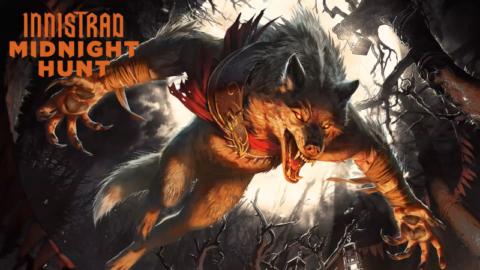
Wizards of the Coast has begun the grand unveiling of the first of two fall sets for Magic: the Gathering, ushering a return to the gothic horror-inspired Innistrad. With Innistrad: Midnight Hunt, the plane’s denizens are welcoming the Harvesttide Festival, a central event to the set with card art depicting rituals of the festival. Our prior visit to the plane left the day and night cycle in disarray. Now, as the days pass and the Harvest Festival approaches, the nights have been growing abnormally longer, perfect for the horrors that go bump in the night to stir again.
Midnight Hunt is back to being full of werewolves, vampires, zombies, and other terrifying creatures, instead of the Eldrazi threats from the last visit. A few mechanics have been revived (some with a new spin!), and the graveyard is a focus again in this morbid setting. Here’s a look at what to expect in Innistrad: Midnight Hunt:
Flashback
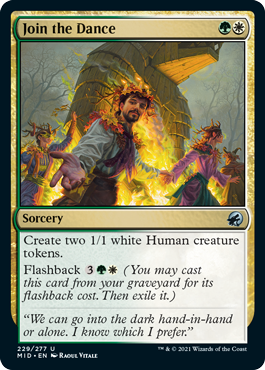
Flashback is making a big return in Midnight Hunt. The mechanic remains the same – players can cast an instant or sorcery from their hand for its regular mana cost and cast it from the graveyard for its Flashback cost and exiling the card. However, this set introduces the first multicolored Flashback cards, greatly expanding the possible effects we can see.
Transform
Transform made its debut in Innistrad and has become a mainstay for the plane. It’s no surprise that it returns for Midnight Hunt and features heavily in the werewolf tribe the set is based around. Transform cards use both sides of the cardboard, and meeting certain conditions allows the player to flip the card and unleash the horrors that await on the back. In the case of werewolves, they are human on one side, with their lycanthropic beast on the other.
Along with the reintroduction of this take on double-sided cards are some new ways to transform them, whether it be due to the passage of time or facing the terrors of death.
Daybound and Nightbound
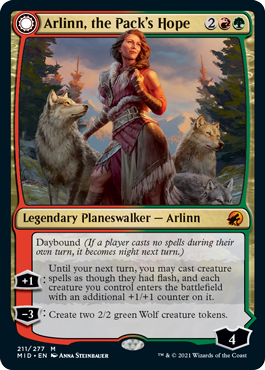
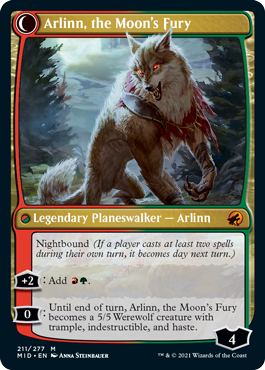
Easily the most complicated set mechanic, Magic now has a day/night cycle that will affect the battlefield. Actions (or inaction) during each turn, along with card effects, can determine whether the battlefield is experiencing day or night, and when the time shifts, cards bearing Daybound or Nightbound creatures are forced to transform. Some werewolves in the set will have both of these keywords on opposite sides of the card and will have their transformation bound to whether the sun is shining or the moon has risen. Arlinn Kord, the werewolf Planeswalker seen above, is subject to this very transformation condition.
The game rules will only start caring about the time of day if a Day/Nightbound card is played and only affects cards where the time of day is conditional. Here’s how the time shifts if a creature or spell isn’t specifically changing the time of day:
When it’s daytime: if a player plays no spells during their turn, it becomes night next turn
When it’s nighttime: if a player casts at least two spells during their turn, it becomes day next turn
It’s a cool way of realizing the werewolf fantasy but keeping track of this while playing in paper will be a challenge. I foresee myself missing many time of day triggers by forgetting how many spells someone did or didn’t play during their turn. It’s a lot to keep track of and might be the most digital-centric mechanic we’ve seen from a Standard-legal set.
Disturb
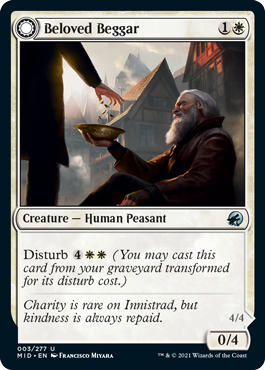
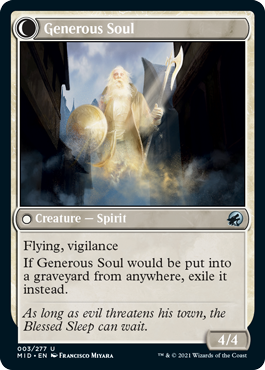
Death is far from the end on Innistrad, and certain creatures ending up in the graveyard can find new life on the battlefield, albeit changed. Like Flashback or Embalm from Amonkhet, Disturb creatures can be cast from the graveyard, though they hit the battlefield transformed into whatever monstrosity is on the reverse side of the card. Unlike those prior mechanics, Disturb doesn’t require the card to be exiled when cast but don’t expect them to stick around forever. In the case of Generous Soul, it’s exiled upon returning to the graveyard; a welcome safety valve for a mechanic that could otherwise get out of hand.
Decayed
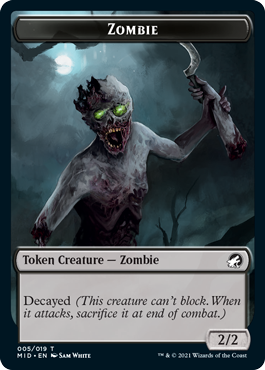
Zombies are getting their own flavorful mechanic in Midnight Hunt with Decayed. The fragility of these corpses with Decayed won’t allow them to block, and if they attack, they’re immediately sacrificed at the end of combat. Expect to see this on swarms of zombie tokens that can be made for cheaper than the typical rate and in greater quantities.
Coven
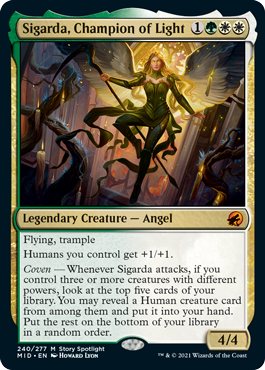
Humans will have to find strength in numbers to survive the Midnight Hunt, and alongside them for the fight is the angel Sigarrda, Champion of the Light and the Coven mechanic. This new Sigarda card shows that Coven is activated if you control three or more creatures with different powers. In this case, Sigarda searches the top five cards of your library for a human card to put in your hand whenever she attacks, and the Coven requirements are met.
Those worried about the absence of Avecyn, the previous angelic protector of the humans, rest easy knowing Sigarda has now taken up that mantle. Or as easy as one can in a world full of monsters, the undead, and whatnot.
Investigate
A versatile mechanic from the previous trip to Innistrad returns with Investigate. When a card Investigates, an artifact “clue” token is created and placed on the battlefield. That player can spend two mana of any color, tap and sacrifice the clue to draw a card at any time. Nothing flashy, but it’s good to have Investigate back on the plane where it originated.
Innistrad: Midnight Hunt releases on Magic: The Gathering Arena and Magic: The Gathering Online September 16, instore prerelease events begin on September 17, and the set officially releases in paper on September 24.
Which mechanics are you excited about with Innistrad: Midnight Hunt? Are there any cards you’re looking to brew new decks around? How do you feel about Magic having two full fall sets this year? Let me know in the comments!
